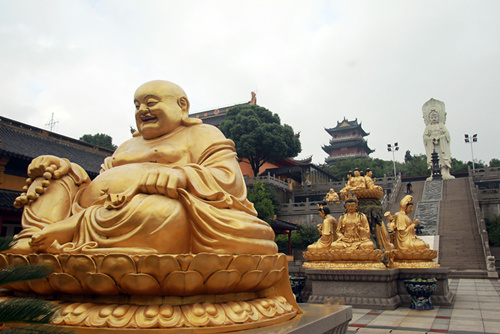|
Temple known for three wonders, an author and examinees
( chinadaily.com.cn )
Updated: 2015-11-11
|
|||||||||
It seems appropriate that a city as affluent as Zhangjiagang would host an ancient temple devoted to wealth.
Yongqing is a 1,500-year-old holy site where pilgrims have prayed for prosperity since the Three Kingdoms period (AD 220-280).
Hence its Hall of Mammon.
Their prayers have been answered.
Today, the city's GDP is equivalent to that of a northwestern province.
But Yongqing is priceless in itself.
 |
|
Yongqing is one of southern China's most ancient temples of its kind. Five hundred arhats are rendered in clay in Yongqing. The Buddhist Culture Garden contains statues of various styles, including cute kids practicing kung fu. [Photo provided to chinadaily.com.cn] |
It's one of the oldest remaining southern Chinese temples of its kind. And recent expansions have added value — especially the Buddhist Culture Garden.
Part of its claim to fame comes from its "three wonders": a natural stone wall, a 1,000-year-old tree and a massive bodhisattva statue.
These hail from, and represent, layers of time.
The rock formation is millions of years old. The tree is from a millennium ago. And the towering Guanyin figure was installed when the garden was created in 2008.
Small golden Buddhist figures are perched along the gingko trunk from the temple's first days. (It, plus two pillar foundations, are all that linger from that period.)
The tree died long ago, but it has been preserved as a testimony to the temple's early life. It's propped against a walkway flanked by likenesses of the 12 creatures of the Chinese zodiac.
Petting the one of your birth year as you walk past is said to bring good luck.
But the most striking sculptures occupy the culture garden.

